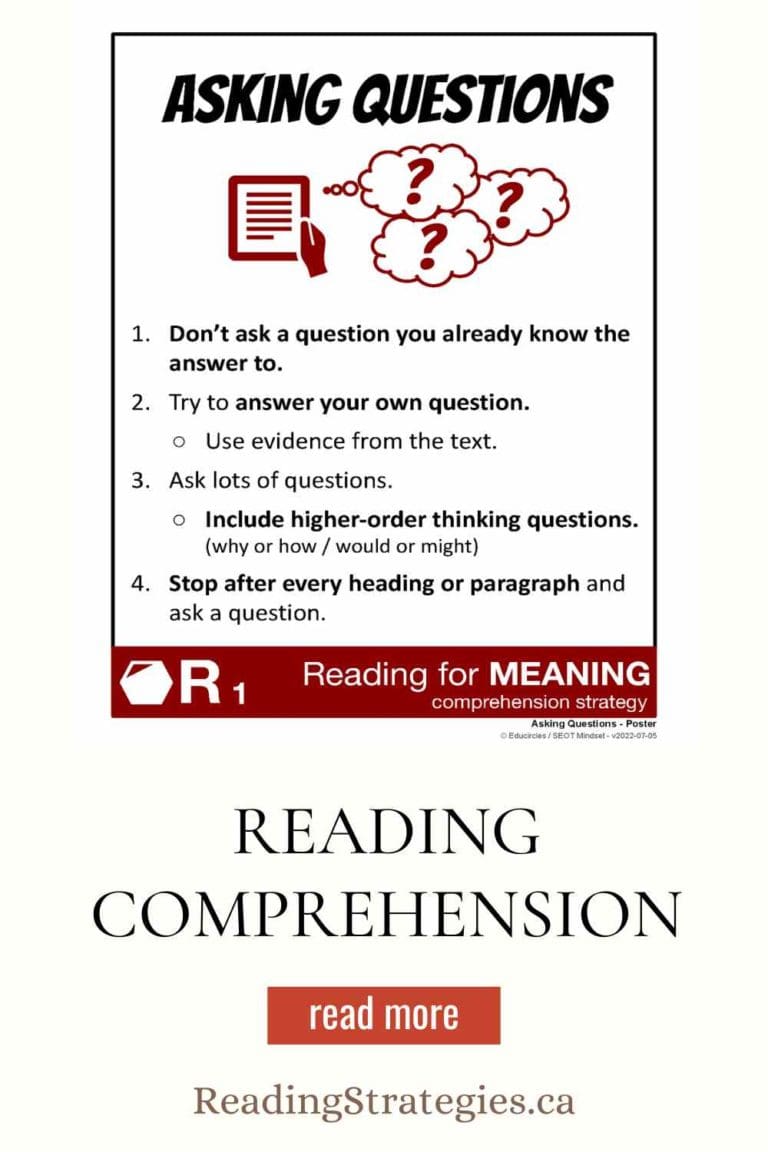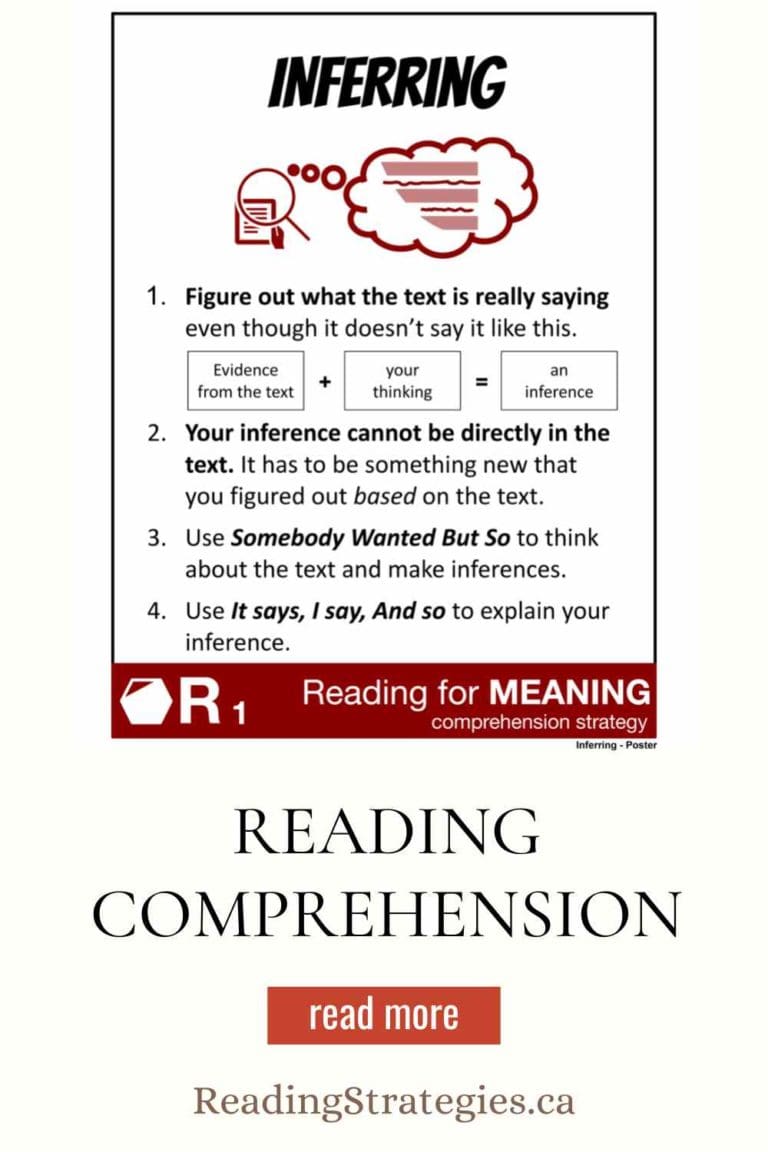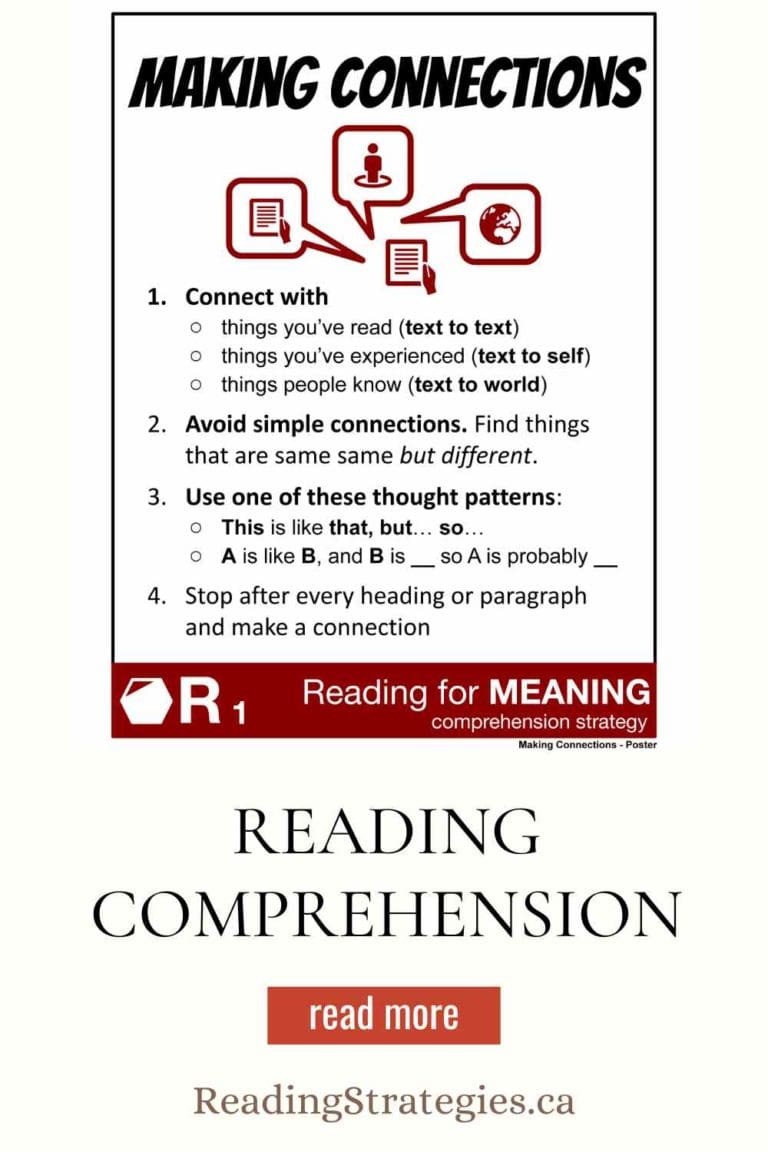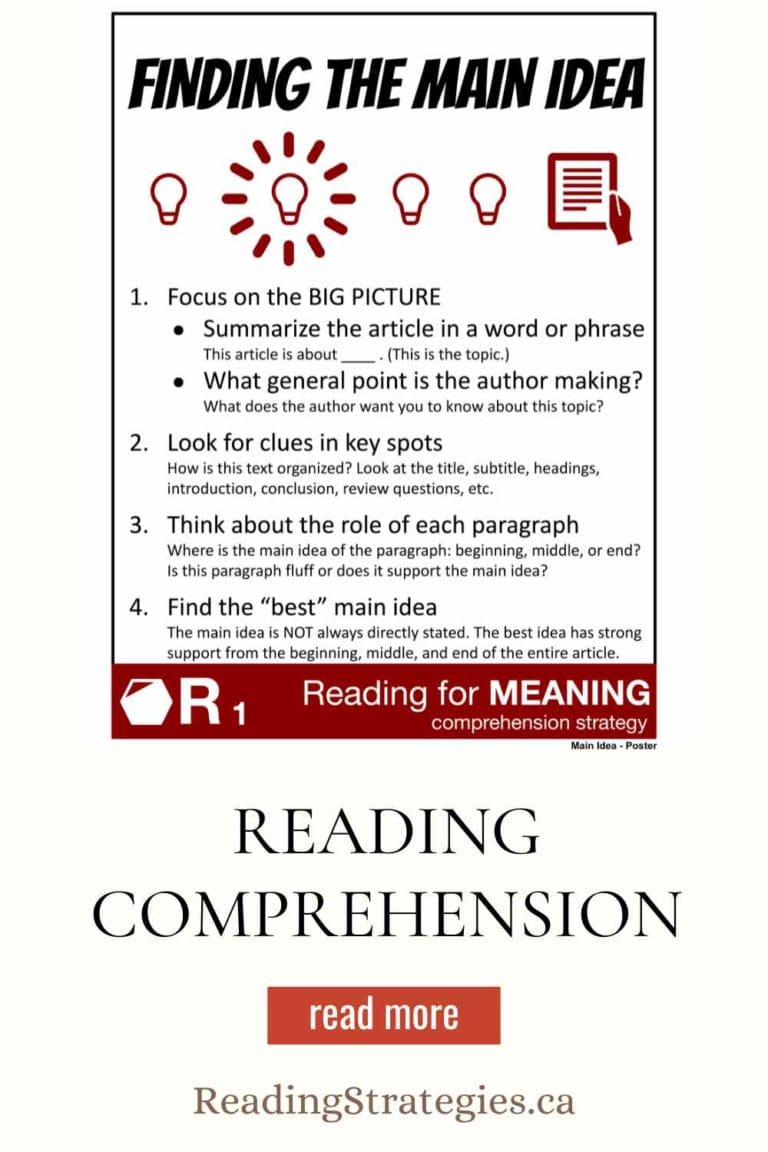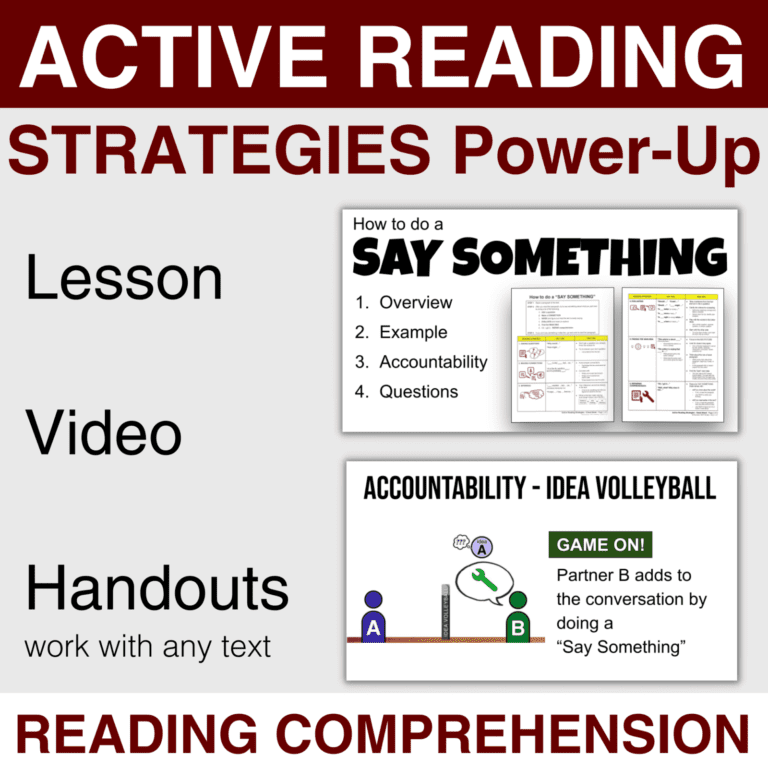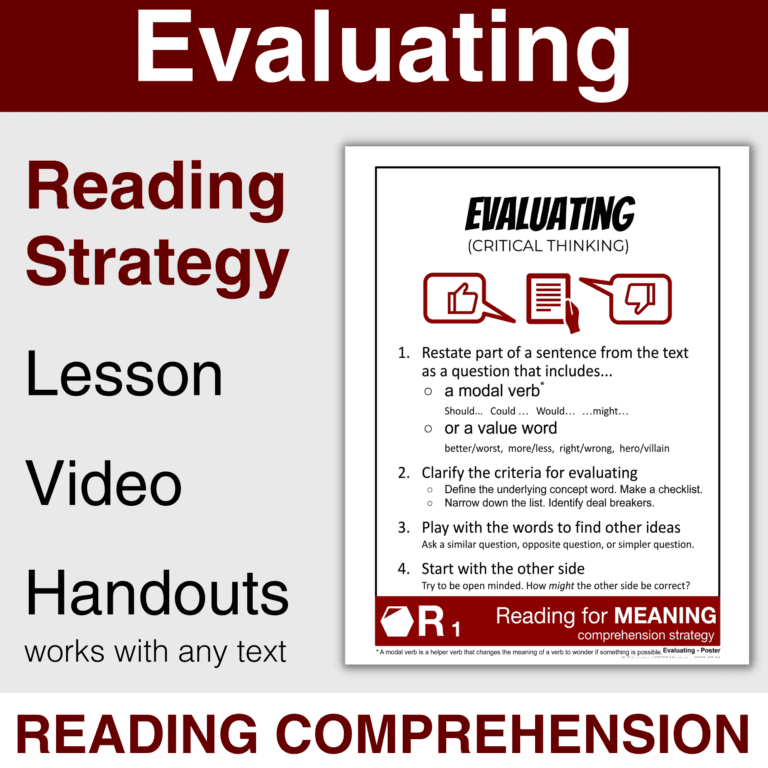Repairing Comprehension Reading Strategy Lesson Plan UPDATE Nov 19, 2022
Teach students HOW to monitor understanding and clarify thinking when reading.
There’s more to figuring out what’s going on in a text than just simply re-reading.
Use this lesson to give students a process to help them monitor their understanding as they read. Help students…
- clarify their thinking by making a point,
- use evidence from the text, and then
- explain how that evidence proves their point.
How to Monitor and Repair Comprehension when Reading – 4 PRO TIPS
- Read a paragraph and SAY SOMETHING: Ask a question, Make a connection, Make an inference, Form an opinion
- Does your SAY SOMETHING make sense with stuff you know about the world? If not, re-read the paragraph. Use PEEP to clarify your thinking.
- Does your SAY SOMETHING make sense with stuff you already read in this text? If not, re-read the paragraph. Re-read the other stuff you already read.Use PEEP to figure out why it doesn’t make sense.
- PEEP: Point, Evidence, Explanation, Point
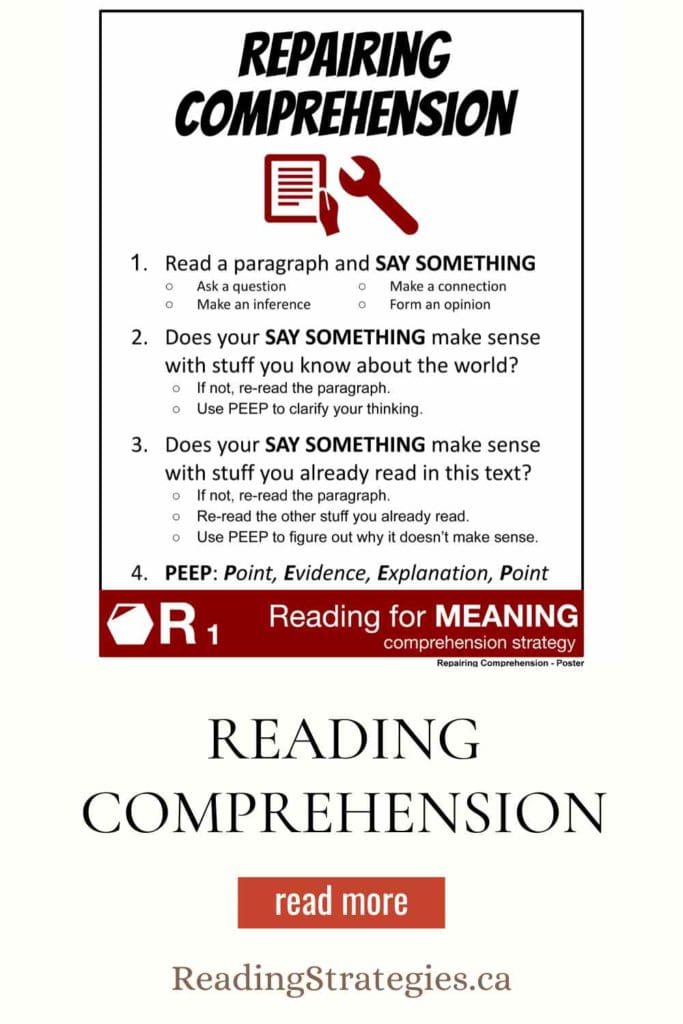
The slideshow lesson is comprehensive, easy to use and includes everything you need for :
- DISTANCE LEARNING or 1:1 LEARNING in Google Classroom
- FACE to FACE LEARNING in your real classroom
In this package, you get:
- the slideshow lesson to walk your students through 4 pro tips to using the Repairing Comprehension strategy and an example of how to use this strategy..
- a generic Repairing Comprehension handout package that can be used with any text. This helps students ask questions before, during, and after reading.
- a metacognition handout/reflection questions to help students reflect on the strategy
- a rubric to assess ideas generated during reading, as well as ideas generated during the metacognition reflection.
BONUS EVALUATING READING STRATEGY LESSON VIDEO:
I’ve recorded the slideshow as a FREE YOUTUBE VIDEO so it’s easier to teach with DISTANCE LEARNING. https://youtu.be/gEsgILYL_lI
IMPORTANT NOTE: This product DOES NOT include a text for students to read!
The package only includes the Evaluating reading strategy lesson plan, slideshow and handouts.
It is intended for teachers to use with a novel or text that they are studying in class.
If you would like to use the informational text in this slideshow about “California surfer breaks stereotypes“, you can find the article HERE.
Reading comprehension strategies like REPAIRING COMPREHENSION help students engage with the text and gain a deeper understanding than just passively reading.
This product is also included in our Reading for Meaning Comprehension Strategies bundle.
Watch the FREE Reading Comprehension Video.

